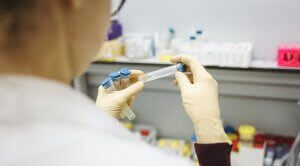 Our one big measure is not sustainable, writes William Watson in the Financial Post. Below is an excerpt from the article, which can be read in full here.
Our one big measure is not sustainable, writes William Watson in the Financial Post. Below is an excerpt from the article, which can be read in full here.
By William Watson, October 20, 2020
An ounce of prevention, Canadians once all knew, is worth a pound of cure. For those of the metric persuasion: there were 16 ounces in a pound. So the prevention versus cure rate of return was very favourable: spend $1 on prevention, save $16 on cure. My guess is that the return is no longer quite so favourable in the prevention/cure trade-offs for COVID-19, however.
When it comes to COVID policy, we’re doing both prevention and cure. We and lots of other countries are bankrolling the search for and eventual production of a vaccine. And there are lots of encouraging signs that treatments are less intrusive and more effective than they were in March. Despite blustering reassurances from the U.S. president, however, COVID is still a serious disease not to be trifled with, especially by older people. There is no cure yet.
On the prevention side, we’ve obviously been doing a lot. It’s not exactly clear how effective mask-wearing and hand-washing are but they’re not expensive or burdensome, especially after becoming a habit. And a safety payoff seems plausible, both for washers/wearers themselves and for people they come into contact with — or into the vicinity of. However, the true cost of COVID prevention is thought to be in the trillions of dollars.
In terms of influencing decision-makers, economists’ gloomy but inevitably imprecise warnings that all this spending and borrowing will not end well cannot compete with pictures of people being wheeled into ICUs. But the costs of the lockdowns that are our chief form of prevention are immense and not ultimately sustainable. I wouldn’t argue the prevention/cure arithmetic is now 16 to 1 rather than 1 to 16, but we do now know that prevention by lockdown is very expensive. It may make sense to move more of those resources — more, not all — into adaptation and treatment.
***TO READ THE FULL ARTICLE, VISIT THE FINANCIAL POST HERE***




